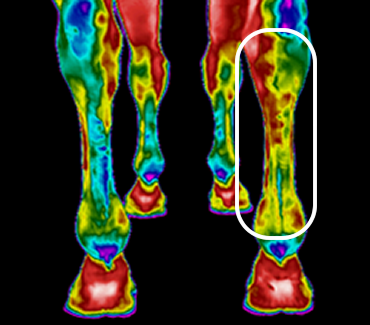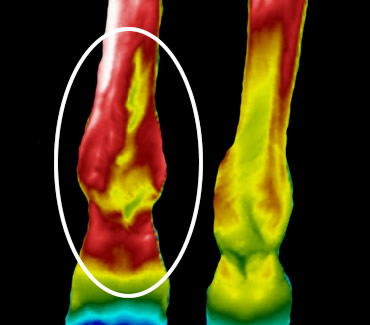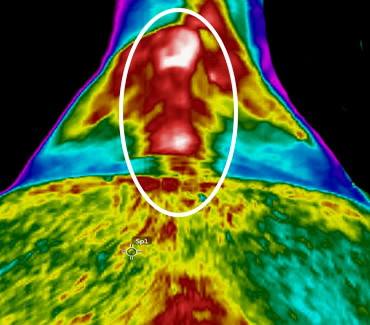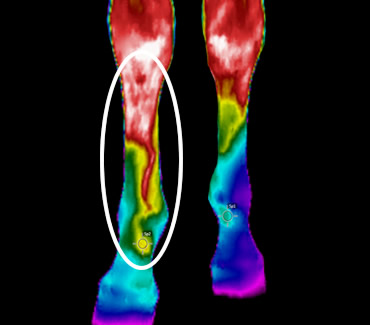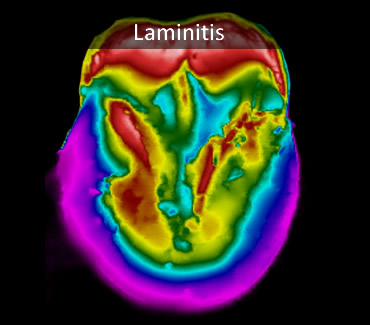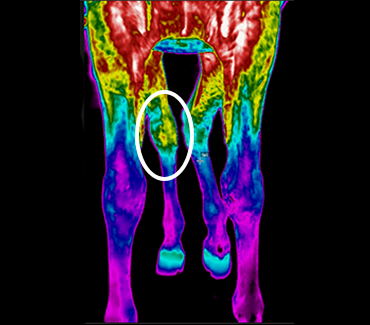Is your horse uncomfortable, bothered or behaving differently? Many times these behavior changes are due to undiagnosed pain. Infrared Thermal Imaging (IRT) can quickly and accurately identify and locate pain points due to inflammation and equine injury. With one quick full-body scan, IRT will show you exactly where your horse hurts so you can immediately work with your veterinarian on complete diagnosis and start treatment for a speedy recovery.
What Is Infrared Thermal Imaging
Infrared Thermal Imaging, also known as IRT, is a miracle time saving adjunctive screening tool. Unlike other imaging options, IRT looks at the ENTIRE body of a horse and identifies areas of dysfunction, accurately pinpointing musculoskeletal inflammation, injury and exact location. One quick full-body scan speeds up the diagnostic process, starts treatment earlier and resolves the problem sooner and more effectively.
IRT works by using a medically approved Infrared Thermal Imaging Camera which scans the entire body of a horse while quickly identifying health problems simply by seeing the invisible. This technology's high-resolution imaging measures the thermal temperature variations and changes emitted from a horse’s body and documents the entire physiology. With pinpoint accuracy, injury and inflammation are easily detected due to the heat they emit, making it easy to see pain points in any horse.
IRT is a non-invasive, no touch, no radiation and no sedation screening. Imaging is extremely affordable, accurate, quick and convenient for both you and your horse. We will come to your location and will only take approximately 30 minutes of your time to image your horse. When used regularly, IRT is a wonderful solution for horse owners to keep an eye on their horse's health status.
Let us help you help your horse. For a consultation or to make an appointment call 201-477-0009.
Learn More About IRT:
What is Infrared Thermal Imaging
What IRT Can Detect In A Horse
Uses For Infrared Thermal Imaging
Advantages of Infrared Thermal Imaging
IRT Success in Equine Athletes
As with any adjunctive imaging screening (such as ultrasound, radiography etc.), thermography is not a stand-alone screening tool and does not replace any other diagnostic device. Additional diagnostic screenings may be necessary and prescribed by your veterinarian for complete diagnosis.






